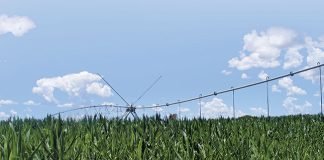This has had a serious impact on soya bean and maize production in particular. Santam Agriculture’s weather expert Johan van den Berg said the only areas where good yields can be expected are the water table lands of Free State and North West.
Good harvests are expected from the Wesselsbron, Bothaville and Hoopstad districts in Free State as well as some areas in Makwassie and Mareetsane in North West. The rest of the maize is under serious pressure. It is unlikely that the effect of the drought can be reversed.
No significant difference
“Any rains now will maybe contribute to kernel weight here and there, but it won’t make a significant difference,” said Van den Berg. “I expect a mean maize yield of very close to or even less than the long-term average of just over 4t/ha. “The soya bean harvest in Free State and Mpumalanga has also been severely affected,”he noted.
“Soya bean yields could be as much as half a ton less than the long-term average yield of 1,1t/ha,” said Van den Berg. He is also concerned about the condition of grazing in the grasslands of the summer rainfall regions – and foresees a difficult time for livestock farmers. The optimum growth period for grazing has expired and the winter season is approaching.
“Farmers will have to carry their animals over for the next seven to eight months with little grazing,” he explained. “The problem is made worse by high maize prices. This crisis is evident in the current sharp increase in livestock sales.” Van den Berg added that grazing in the warmer areas of Northern Cape and the Karoo is in a better condition.
Jaco Maree, vice-chairperson of the National Red Meat Producers Organisation, advised farmers in the drought-stricken areas to sell as much non-breeding livestock as possible. “There is a serious fodder shortage because of the drought. Coupled with high maize prices, I expect a difficult time this winter,” said Maree.
“Producers who have access to grain stover might find it easier to keep their livestock in good condition but it is going to be difficult in the extensive grazing areas,” he said.












